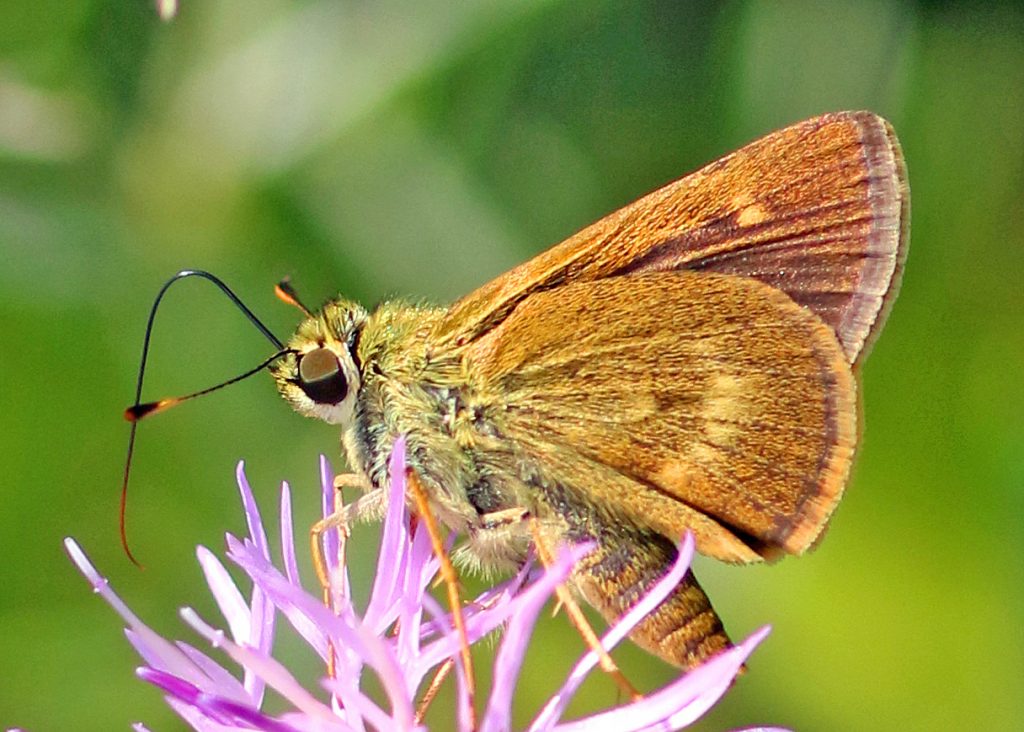
A broken-dash photo’d by Harvey Tomlinson on July 26 at Forsythe NWR, ATL. Note the different colors of fringes: gray on FW, buff on HW, exactly as described in Cech & Tudor as a possible ID tip for southern broken dash. Also, the wings look reddish. Could this be W. otho?
[Originally posted 8-1-16. Scroll to the end for an update as of 8-2-16 and a new photo from Harvey Tomlinson].
Is southern broken dash, Wallengrenia otho, possible in our area?
And if so, can we identify it?
Both Harvey Tomlinson and Will Kerling have recently photographed individual broken- dashes that — at a minimum — give us something to puzzle over.
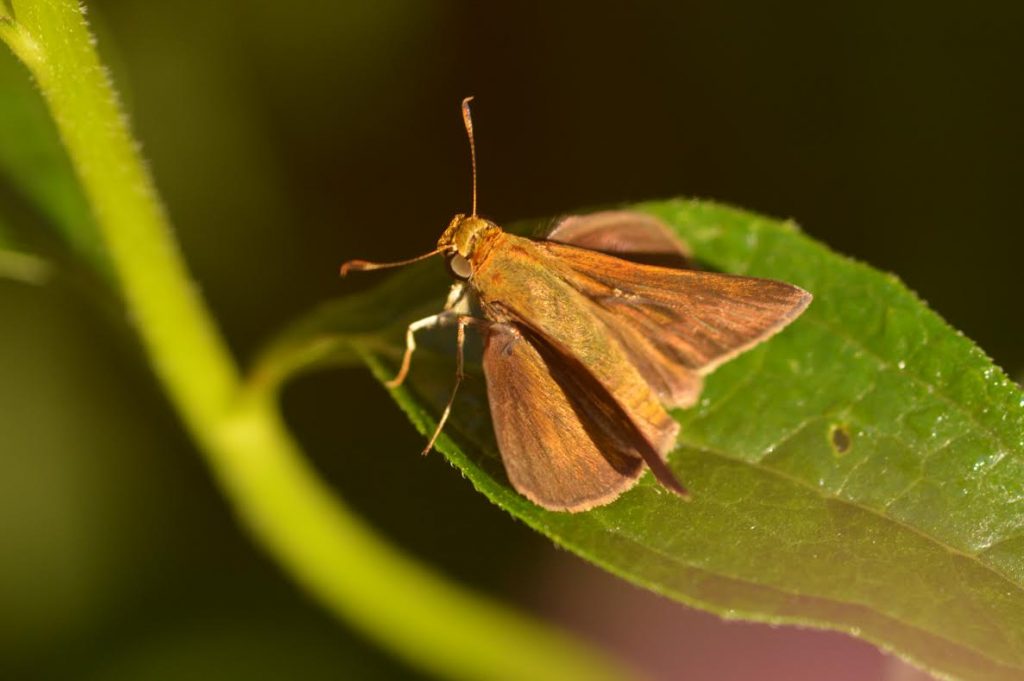
Will Kerling was puzzled by the upperside (dorsal) of this male broken-dash he photo’d on July 19 and 20th at Estelle Manor, ATL. Note the hints of red on both FW and HW.
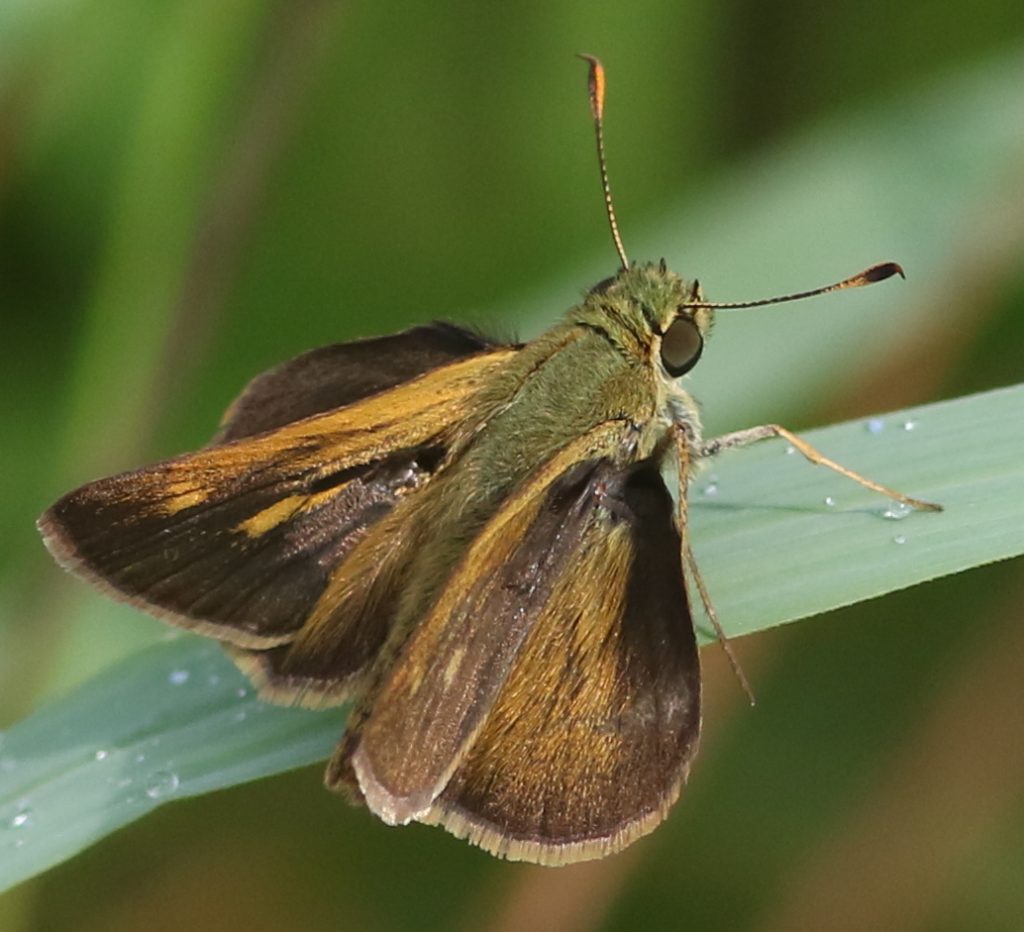
Here’s Harvey’s Forsythe individual from above, also a male, but showing a dorsal side more brown than Will’s individual — suggestive of a northern broken-dash.
As all sources note, the northern broken-dash is the Wallengrenia species expected in NJ. In fact, there are no records of southern broken-dash in the state, and apparently the population closest to us is in Sussex County, Delaware, the southernmost of that state’s three counties.
(For more about the species’ status in Maryland and Delaware, go to Rick Borchelt’s wonderful website, The Lep Log, especially: Lep Log: Butterfly Records for DC, Delaware, & Maryland)
I haven’t been able to find any notes about the species’ abundance in Delaware (common? occasional? rare?), although the absence of records elsewhere in Delaware suggest it is localized, at best.
Sussex County is closer to our shores than it might sound, however — just a dozen miles across the Delaware Bay, as the crow flies or the ferry rides. Lewes, Delaware, is its northeastern tip.
With global climate change pulling so many southern plants and animals our way, a new record for the state for southern broken-dash seems not beyond the realm of possibility.
However, the butterflyer who first finds the species in NJ will have to solve a tough ID test, especially if she or he is equipped only with camera and bins.
The most authoritative study of the two species seems to be by John M. Burns, “Wallengrenia otho and W. egeremet in Eastern North America,” published in The Smithsonian Contributions to Zoology in 1985.
(For a full pdf copy of the 48-page report go to the Smithsonian Research Library here: Smithsonian Research Online: John Burns on W. otho and W. egeremet)
Burns traces the changes in status of the broken-dashes from the 1700s to the modern day and digs deep into their morphological and ecological differences, They were first believed to be separate species (in different genera), later lumped into one (the broken-dash, W. otho) in the late 1800s, and not widely recognized as two separate species again until the 1960s, and “The air was slow to clear.”
Beginning his own studies of the two in 1963 and continuing for the next twenty years, Burns eventually collected museum records from all over the eastern and southern U.S. and examined 2500 specimens. He found that the two are easily separable only by microscopic examination of their genitalia.
Those differences are so distinct that Burns concluded, “I am confident that otho and egeremet do not interbreed. Indeed these species are distinct enough from one another — and so broadly sympatric [in the southern USA, their ranges overlap widely] that they are probably not even sisters [i.e. not descended from an immediate common ancestor].”
Those genital differences are no help those of us who like to ID our butterflies without nets or microscopes, however.
Burns does not mention the distinction seen in Harvey’s photo and noted in most contemporary field guides: southern broken-dashes often show two-toned wing margins while the northern’s fringes are uniform.
He does describe the general color differences of their wings: “Typically, the ground color of the ventral secondary is dull reddish-brown (i.e. rusty) in otho [southern] but brown in egeremet [northern].” This distinction is echoed in all contemporary field guides, e.g. Glassberg (Butterflies Though Binoculars in The East, 1999) “ground color is a rich reddish-brown.”
Burns adds some details that I have not noticed in field guides — probably because they are more obvious on spread specimens than on free-flying individuals. “The pale spots of the ventral secondary are relatively clear-cut in otho but diffuse in egeremet and they tend to ‘show through’ dorsally much more in otho than in egeremet [and also] the arc [that the spots form] is more often irregular in otho than in egeremet.” He illustrates his report with page of specimen photographs (in black and white unfortunately).
Burns emphasizes one other difference that might prove helpful to broken-dash chasers in South Jersey. Southern broken-dash is a double-brooded or triple-brooded species throughout its range. Burns’ graphs indicate northern broken-dash from Virginia north has just one brood. (Cech & Tudor write about northern, “One brood north of Philadelphia, mid-June to August, two to three in South…” The source for this Philadelphia boundary line is not clear. Burns’ bar graphs of his collected records show single broods from early June to mid-August for NJ, PA, DEL, MD, DC, and VA.)
Scrolling through recent photos on our Sightings Log, I found a couple of broken-dashes whose wings show at least hints of two-toned margins. The most intriguing might be this one:
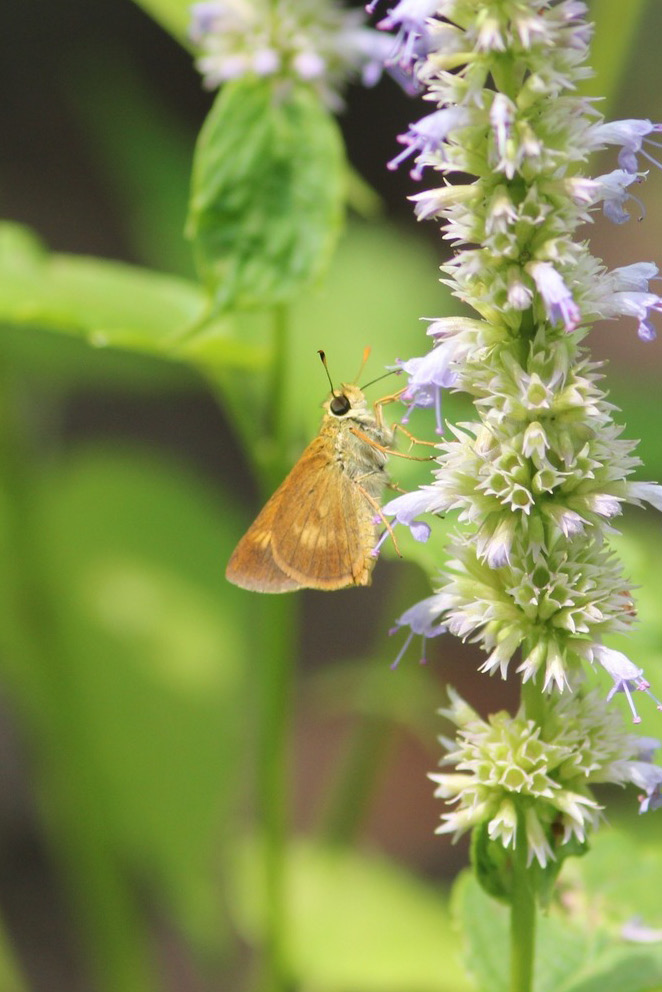
How frequent are two-toned fringes on broken-dashes? Here’s one photo’d by Dolores Amesbury in her garden in Cape May Courthouse on July 27 that hints at that feature.
However, the “rich reddish brown” seems a required field mark for a no-doubt-about-it W. otho. And to make that more difficult, “reddish” (= sbd) can shade into “brown” (= nbd) and vice versa pretty easily, it seems. I say this because as I studied Dolores’s photo I found myself unsure what to call the ground color on her butterfly. Going back and forth between her photo and the on-line photos below, however, I eventually decided I was “hoping for a rarity” instead of being objective.
Here are some images on-line from southern states that illustrate “no-doubt-about-it/textbook” sbds.
Southern broken dash (Tennessee) on Learn About Butterflies
Butterflies of North America: Several photos of sbds.
Here are photos and notes from North Carolina Nature showing both fresh and worn individuals and suggesting that the distinguishing the two species by sight or by photo can be extremely difficult, if not impossible, with worn individuals.
North Carolina Nature on southern broken dash
What are the take-aways here for our hypothetical future first-discoverer of a southern broken-dash in NJ?
The difference in wing fringes might be helpful, but confirming the ID will require (at minimum) coming upon a butterfly fresh enough to show the rich reddish of a “textbook” individual.
The time of year with the most promise — however small that promise is and how high the odds are stacked against you — is probably late summer, mid-August into September. As far as we know, the northern b.d. is single-brooded on the Coastal Plain of NJ (veteran observers: do you agree with that assumption?) and generally stops flying in mid-August. Our late dates for that species over the past nine years have been in mid-August with a couple of September records.
If nbds are only single-brooded in our area, they should definitely be showing wear and tear by August 15th or so, it would seem. By contrast, southern broken-dashes are just re-merging then in Maryland and Virginia, according to Burns’ bar graphs. His charts show southern broken-dashes flying in those states first from early May to early June and then again mid-August to mid- to late-September.
So (!), a fresh broken-dash spotted in late August or September should be a butterfly to study carefully and photo if possible. Two-toned fringes? Reddish ground color? Take some photos and call up your friends to come join you on the scene!
Keep exploring, everyone!
Jack Connor
Update as of 8-2-16: Harvey T has sent in another photo of the same individual at Forsythe. Seeing this second dorsal photo (below) and the first dorsal photo at the top of this post, David Wright has noted, “Mighty suspicious of southern broken dash.”

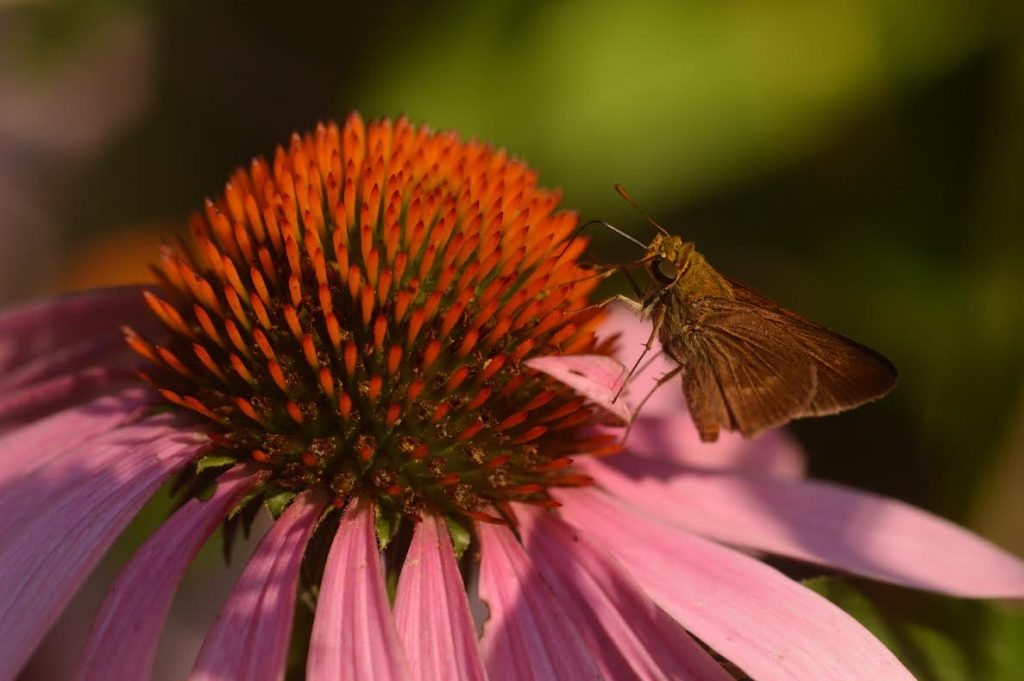
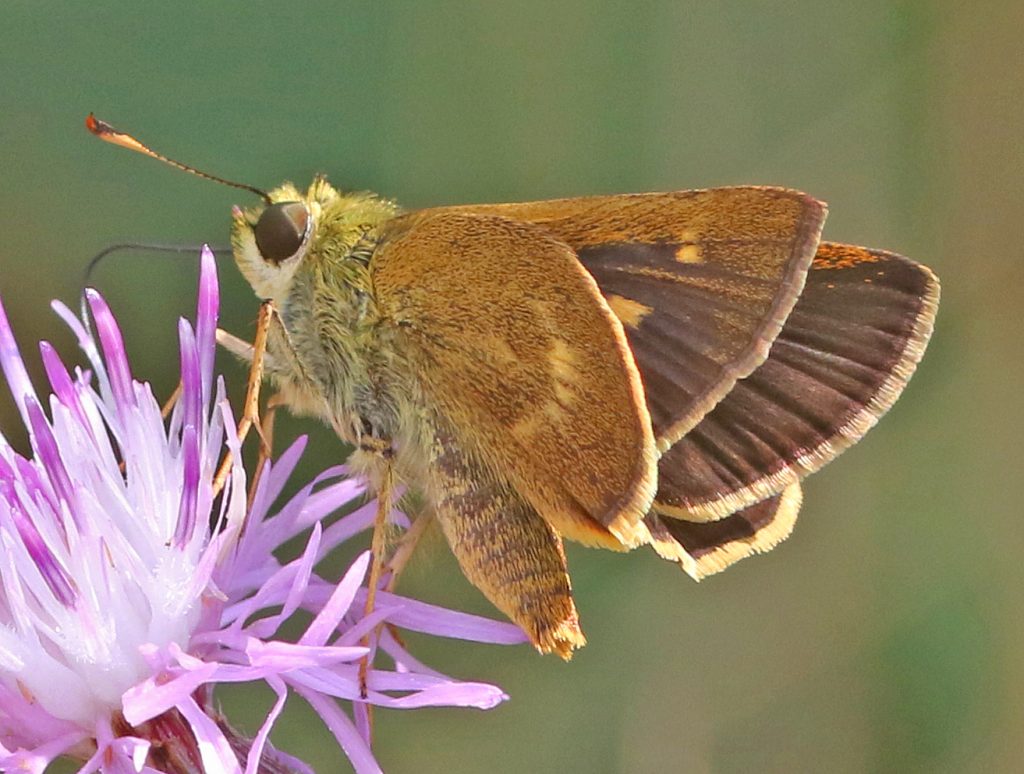
The bottom two images look identical to W. otho in the southeast. The reddish wash is very distinctive when fresh but worn specimens grade together. There is no dorsal pattern that is useful. But the solution is clear and easy for a NJ butterflier to get a state record officially recognized: carry a net and voucher a single individual of any mystery Wallengrenia and send the specimen to a professional entomologist to check the genitalia which are quite distinctive.
I know the pointless hate for collecting (even done by scientists as I found out in Jersey), but this is a situation where collecting is absolutely still necessary for accurate and official reporting of vagrant species or range extensions. ALL exceptional records for vagrants should be vouchered for scientific collections. The date of occurrence could be very useful for research on range expansion and climate change, and unverifiable photos will never be confirmed 100%.
There will be a time when Pyrgus albescens comes up the coast and replaces P. communis. Lepidopterists documented the replacement of P. communis by P. albescens in coastal NC and almost the entire state of SC by vouchering single specimens out of known populations and sending them to experts to identify.
No one is required to collect butterflies, but lep watchers should be prepared in case they find something one of a kind, or the first vanguards of a species spreading north.
Hopefully this is taken the right way and not the wrong way.
I agree with Ray Simpson’s suggestion that a specimen be collected in this case to properly verify and document the occurence of W.otho in NJ. Harvey’s superb images strongly suggest W.otho. I have observed this species annually in Kent County,Md at the Eastern Neck NWR including the first Kent County record, I believe it was in 2008. Photos were submitted and accepted by Richard Smith. As far as collecting in general, I have no moral objections to collecting. I do have some ethical objections to collecting when it is done just for personal gratification. When I photograph a butterfly, I leave it for the next person to observe and enjoy. Collecting species that are already tough to find in a given area can deprive others of the joy of observing these facinating creatures. Hopefully someone will be able to verify W.otho in NJ!